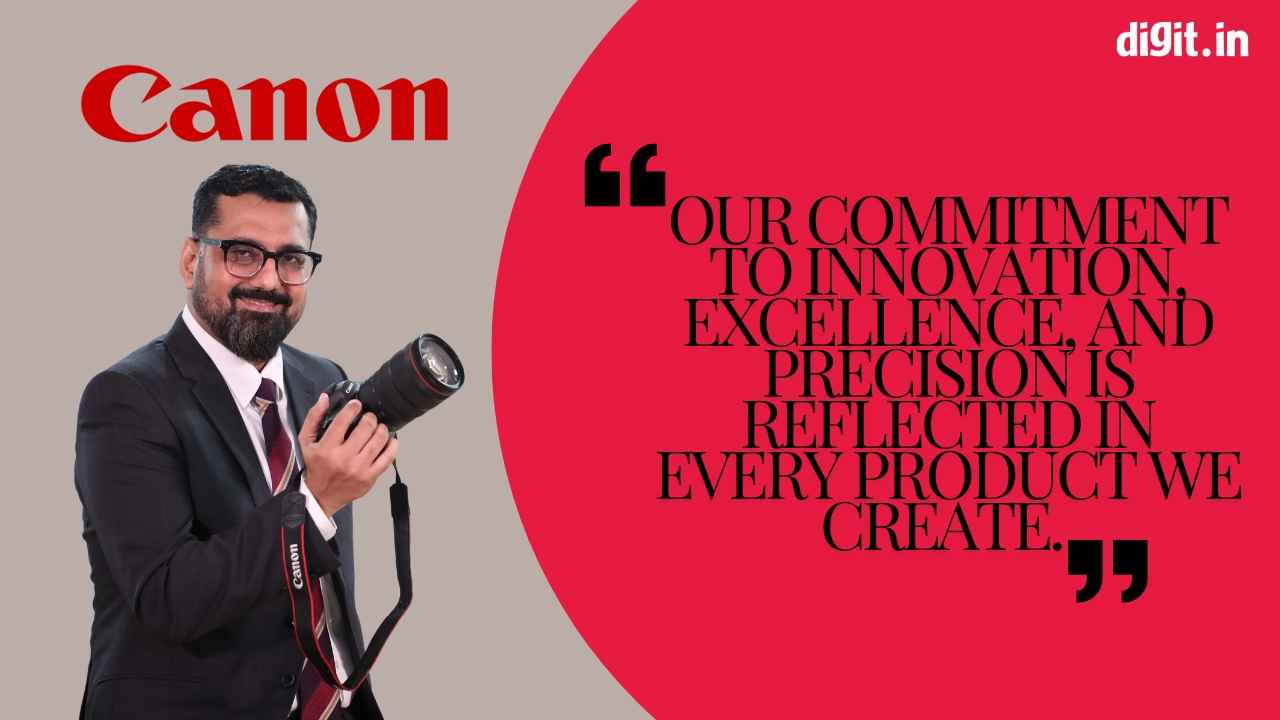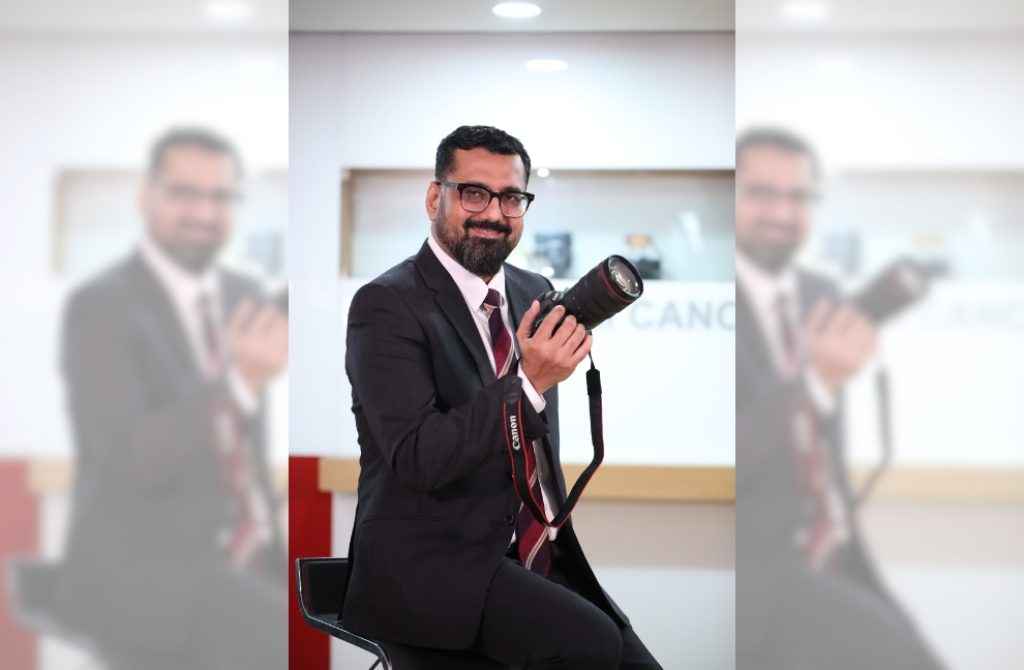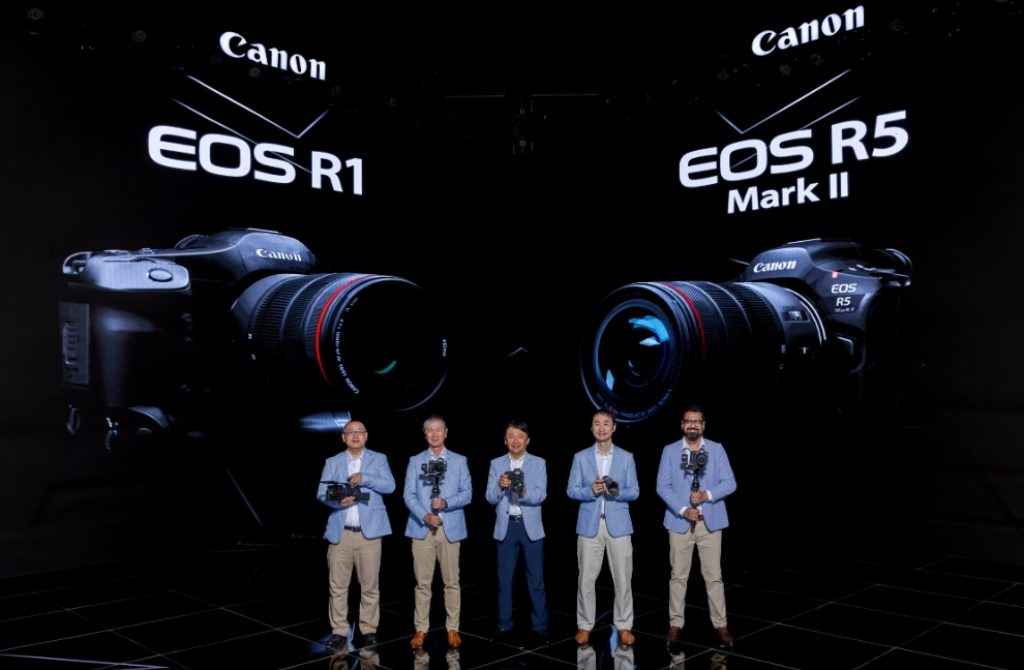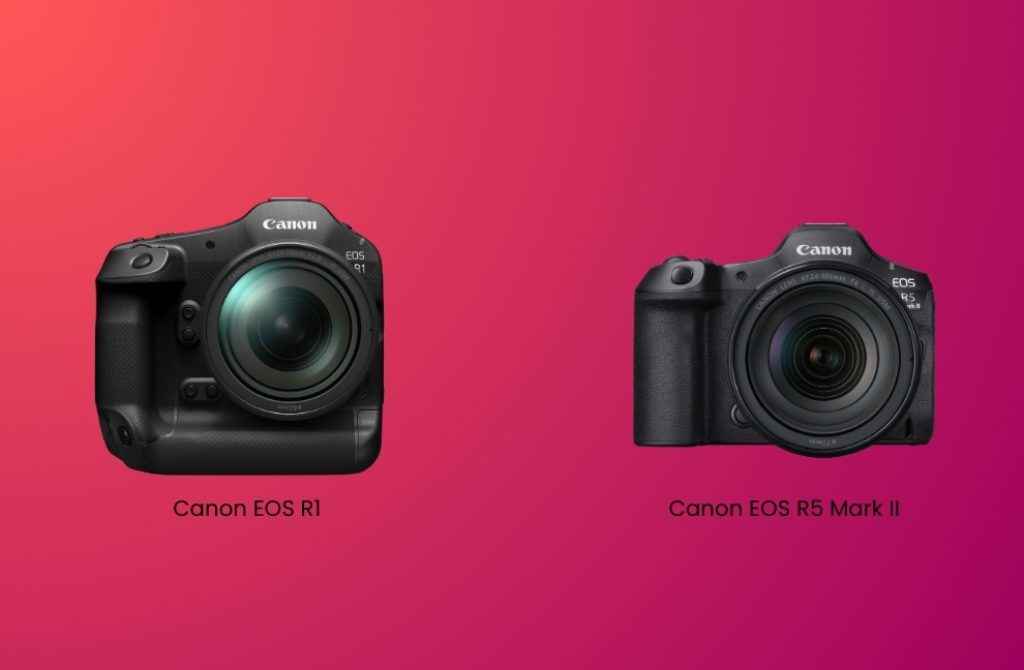Imaging, India & Intelligence: A conversation with Canon India’s camera business head
Understanding that India is a priority market for us, we have remained agile and innovative in our approach to the Indian market, Magoo said.
"AI serves as a complementary tool rather than a replacement for human vision and innovation," Magoo said.
By expanding our offerings into diverse categories, we aim to redefine storytelling and provide users with immersive experiences.

Canon, the leading camera maker has been going quite aggressive in India. The brand has recently launched two new series, EOS R1 and EOS R5 Mark II to further push the envelope in terms of photography. However, given the smartphones and laptops – focused tech market in India, we don’t get to hear about camera brands and what they are up to.
With that in mind, I took the opportunity to have a chat with Canon’s imaging head in India to understand what goes behind Canon’s imaging expertise, what the company is planning for the future, AI implementations, competition with smartphone brands, and much more. Here are a few excerpts from my conversation with Mr Vishesh Magoo, Assistant Director, Imaging Communications Business Centre, Canon India.
 Survey
Survey
How does Canon plan to tackle the ease of access and usability that smartphones offer?
In today’s technologically advanced world, consumers demand both convenience and quality. While handheld devices have made photography and videography accessible, they often do not share the same level of quality and control as dedicated imaging equipment. As a brand, our primary emphasis lies in elevating and enhancing the outcome of photography and videography.
Our commitment to innovation, excellence, and precision is reflected in every product we create such as EOS R100, EOS R50 etc.
Vishesh Magoo, Canon India
By combining superior ergonomics, advanced video quality, and cutting-edge technology, we empower every smartphone user to upgrade and explore their full creative potential and create captivating content that stands out.
What has been your biggest learning from the Indian camera market and how are you using those learnings for your future plans in India?
India, as one of the world’s fastest-growing economies with a rapidly improving infrastructure presents a lot of opportunities for Canon. Understanding that India is a priority market for us, we have remained agile and innovative in our approach to the Indian market. We believe that the Wedding and Cinema industries have been instrumental in driving this growth. Thus, along with the evolving landscape and consumers’ requirements, we have focused on delivering products that meet the diverse needs of professionals and budding photographers, alike.

Canon is committed to invest in research and development of emerging technology to ensure we continue empowering consumers across industries through our innovative technology and equipment. Moreover, we recognize the significant potential of growth in Tier 2 and 3 markets. Through our extensive distribution network, we are working to expand our reach and build stronger relationships with customers in these regions through our touch & try workshops mentored by Industry experts empanelled with us under our Ambassador Program.
With AI being the talk of the town, what are the possible implementations and use cases where AI can be leveraged in DSLR or mirrorless cameras? What are Canon’s plans for implementing AI and bringing AI to its products and services?
Artificial Intelligence (AI) is revolutionizing industries across, and digital imaging is no exception. The technology has the potential to enhance how we capture, process, and even interact with images. From enhancing autofocus precision and improving image processing to automating post-production tasks, AI has the ability to make the entire photography and videography experience more efficient.
At Canon, we are committed to harnessing the power of AI to enhance our products. We are actively exploring AI-driven features that can benefit photographers and videographers at all levels. In our recently launched flagship cameras, the EOS R1 and EOS R5 Mark II, we’ve incorporated emerging technologies that significantly improve performance and image quality. The cameras are equipped with the DIGIC Accelerator and DIGIC X video engine, enabling high-speed data processing and deep learning-based analysis. Such improvements make it easier for photographers to capture fast-moving subjects with precision, whether in sports, wildlife, or event photography. Our approach is to thoughtfully integrate these emerging technologies where it can enhance creativity, simplify workflows, and deliver the exceptional quality that Canon is known for.
Are you excited about the possibilities that AI is bringing, or do you think that AI will be detrimental to the camera industry since creating aesthetic images is only a few text prompts away?
The most recent Canon cameras use deep-learning artificial intelligence, trained using thousands of images of objects in the real world, to enable them to recognise specific subjects wherever they are in the frame.
Powered by what Canon calls deep learning and is colloquially called AI, the upscaling feature lets you increase the size of an image by 400%, while noise reduction can effectively reduce noise by two stops. The potential of this tech is huge.
I have read that the latest Canon products – the EOS R1 and EOS R5 Mark II come equipped with a “next-generation image processor system and deep learning capabilities.” Can you elaborate a little on the deep learning capabilities?
Reinforcing the legacy of EOS R series, the latest entrants, EOS R1 and EOS R5 Mark II redefine the boundaries of photography and videography for consumers. The introduction of these two legacy products is strategically aligned with the growth of key sectors in India. The cinema, wedding, wildlife, sports and content creation are all expanding rapidly, and the EOS R1 and EOS R5 Mark II are poised to meet the evolving demands of these industries.
The EOS R1 is the camera for professional photographers who need to capture the decisive moment even under the toughest shooting conditions. On the other hand, EOS R5 Mark II’s acclaimed 45-megapixel resolution, its enhanced video functionality with 8K 60p and custom picture, high-speed continuous shooting performance, and enhanced AF functionality make it a true all-rounder camera that can handle any subject for both video and still images.

Both the cameras come equipped with a Digic X + Digic A processor that leverages deep learning technology to enhance performance and capabilities. Further, deep learning technology improves the accuracy of AF tracking and enhances image quality through upscaling and noise reduction. Upscaling involves increasing the resolution of an image without compromising detail, while noise reduction helps to minimize graininess. The deep learning algorithms in the EOS R1 and EOS R5 Mark II can effectively apply these techniques to produce cleaner, more visually appealing images.
Since I review a lot of smartphones, I am seeing many mobile phone brands collaborating with legacy camera makers. For example, the partnership between Xiaomi and Leica or the partnership between Vivo and Zeiss. What are your thoughts about such collaborations and is there a possibility of Canon ever collaborating with a smartphone brand to help with their camera development?
At Canon, we are dedicated to delivering cutting-edge technology through professional-grade cameras and exploring innovative collaborations. As part of our endeavour to enhance the customer experience, we are developing RF-S7.8mm f/4 STM Dual lens as a latest addition to our EOS VR system lineup. This will help users record spatial audio for Apple Vision Pro- the first-ever mixed-reality headset. By expanding our offerings into diverse categories, we aim to redefine storytelling and provide users with immersive experiences.
What is the roadmap for the remaining half of the year? Could we expect more camera launches from Canon?
Through 25 glorious years in India, Canon has gained deep insights into unique customer patterns while adapting to the evolving industry landscape, especially as it transitions into the digital age. This aligns with our philosophy of ‘GEMBA,’ which means staying close to our customers and keeping them at the heart of everything we do.
Our key focus moving forward is to accelerate growth across diverse domains. On the product and services front, we will continue to expand our mirrorless camera portfolio to reach a broader audience, while strengthening our position in emerging industries like OTT, Broadcast, and Cinema.
Owing to the evolving videography culture in the country across industries such as entertainment, education, content creation, and for different formats such as short-form videos, vlogs, and OTT, this segment remains a significant focus area for us. We aim to deliver advanced video solutions to content creators, filmmakers, and professionals across diverse fields.
Whether through customer feedback, new product launches, firmware updates, or engaging campaigns like #CaptureWithCare, Creator Mode on etc Canon remains committed to staying ahead of industry trends and introducing innovative products based on the pillars of speed, comfort, and superior image quality.